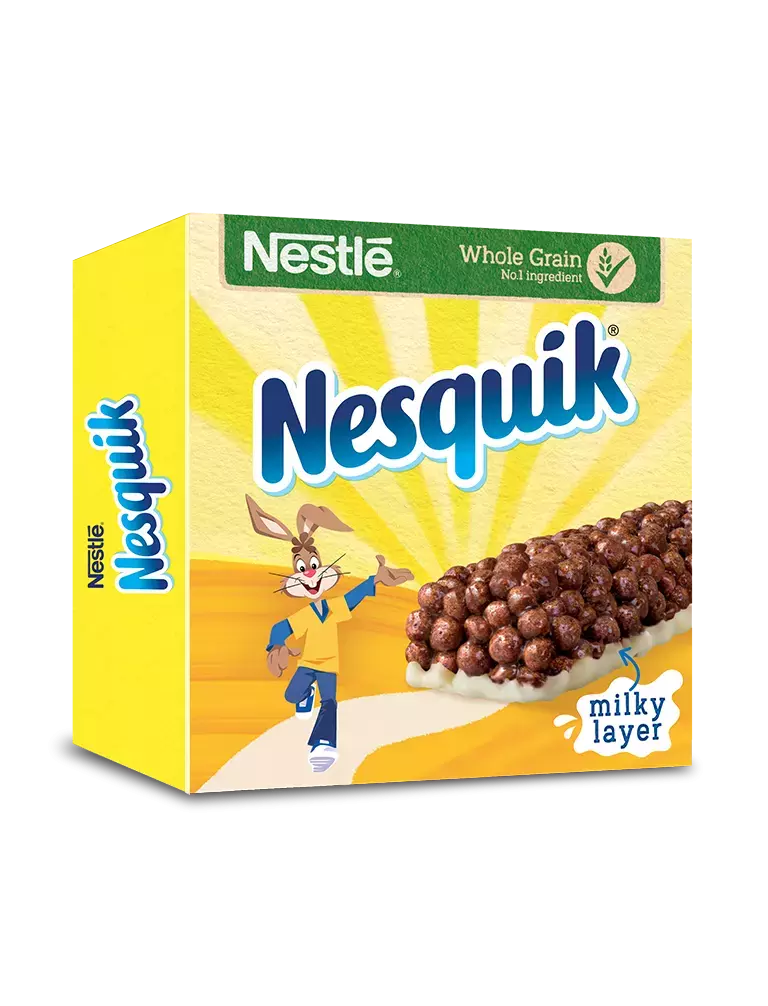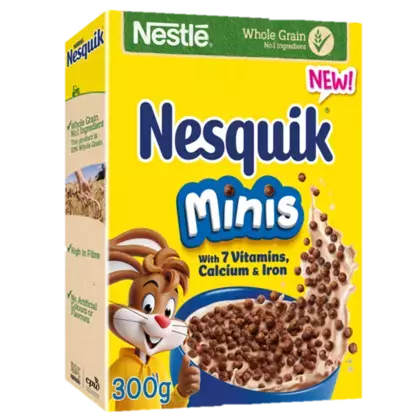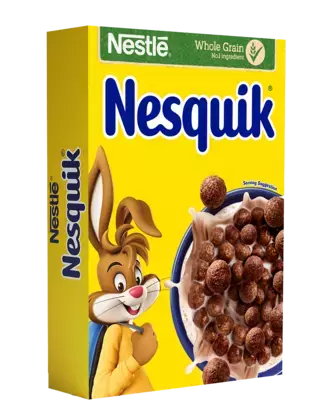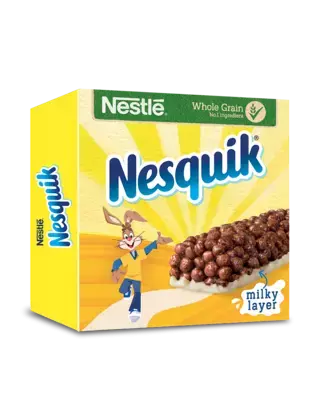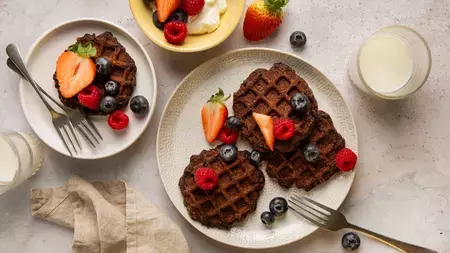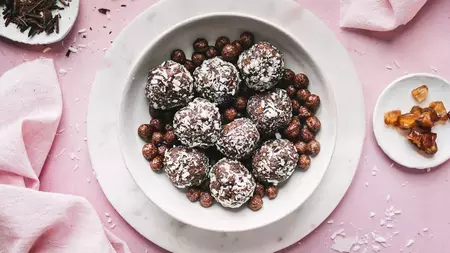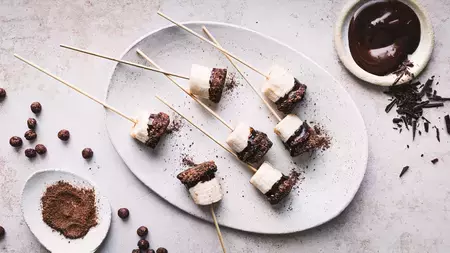Your NESQUIK® cereal in a ready-to-go bar! Each chocolatey cereal bar is a source of iron, made with B vitamins and whole grains. Oh, and they taste delicious!
Source of Fibre
5 Vitamins, Calcium & Iron
No artificial colours or flavours
Vegetarian
Our carefully selected ingredients
Whole grain WHEAT flour (34%), glucose syrup, sugar, vegetable oil (sunflower, coconut, shea) humectants: glycerol, sorbitol syrup; invert sugar syrup, skimmed MILK powder (5.1%), BARLEY malt extract, calcium carbonate, maize semolina, rice flour, maltodextrin, cocoa powder, fat-reduced cocoa powder, salt, emulsifier: lecithin, antioxidant: tocopherols, iron, vitamin B3, B5, B9, B6, B2.
May contain NUTS.
Nutritional info
Energy
416kJ
99kcal
Fat
2.9g
Saturates
1.2g
Sugars
5.4g
Salt
0.11g
Typical values
| % RI* | ||
|---|---|---|
| Energy (kJ) | 416 kJ | 5% |
| Energy | 99 kcal | 5% |
| Fat | 2.9 g | 4% |
| of which: saturates | 1.2 g | 6% |
| Carbohydrate | 16.7 g | 6% |
| Of which: Sugars | 5.4 g | 6% |
| Fibre | 1.3 g | |
| Protein | 1.7 g | 3% |
| Salt | 0.11 g | 2% |
| * Reference Intake of an average adult (8400kJ/2000kcal) | ||
Vitamins & minerals
| % RI* | ||
|---|---|---|
| Riboflavin (B2) | 0.38 mg | 27% |
| Niacin (B3) | 3.5 mg | 22% |
| Vitamin (B6) | 0.4 mg | 29% |
| Folic acid (B9) | 47.5 μg | 24% |
| Panthothenic acid (B5) | 1.3 mg | 22% |
| Calcium | 348 mg | 44% |
| Iron | 2.8 mg | 20% |
| * Reference Intake of an average adult (8400kJ/2000kcal) | ||
From time to time we adjust the recipe for our products. We recommend that you always check the ingredient lists and nutrition declarations on the packs of all our products before you purchase to see the very latest product information.
